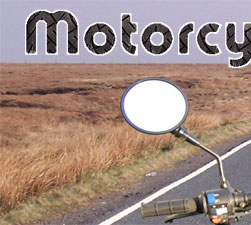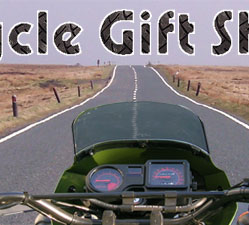|
Eye protection is critical while riding a motorcycle. Even most states that do not have laws requiring motorcycle riders to wear helmets require some form of eye protection. Many proponents of helmet laws think requiring eye protection is ridiculous but the law does not diminish the importance of helmets, it just shows how important it is to protect a rider's eyes while operating a motorcycle. Motorcycle helmets do nothing to prevent accidents; they only work to prevent injury in the event of an accident. Being able to see and assess the situations around you is critical when riding a bike. At highway speeds, every stone and bug in your path is an eye injury waiting to happen. Wind alone can take its toll on long motorcycle ride, drying and irritating the eyes and adding to rider fatigue. Some motorcycle riders prefer not to wear a helmet but all experienced riders know to protect their eyes.
Obviously, a full-face helmet will protect the rider's eyes effectively. There are plenty of other options when it comes to guarding the eyes from debris. Sunglasses are probably the common and often the most practical solution since they will block most debris. Most people own a pair already and they can be worn in daily life. The main weaknesses with sunglasses are that they offer very limited protection from the sides and that tint can dangerously reduce visibility at night. Tinted eye protection should not be worn at night or in any other low light conditions.
Motorcycle goggles are the most complete eye protection solution available. Goggles seal the area around the eye completely, offering a protection from bugs, debris and dust that even a full-face helmet can't match. Because of this, goggles are a must for dirt bike and motocross racers who constantly face flying dust and dirt. Because goggles prohibit airflow, there is a chance of fogging. If it becomes a problem, there are a number of aftermarket products designed to prevent fogging. Once you get to your destination, however, the goggles are not particularly useful like sunglasses might be.
There are a number of styles of eyewear that offer compromises between the versatility of sunglasses and the effective protection of goggles. Many companies offer low profile goggles that are tinted to give the look of sunglasses. They generally have foam around the edges to ensure a good seal around the eye and elastic bands instead of temples. One innovative product in the protective motorcycle eyewear world is the convertible sunglasses/goggle set. These sunglasses feature temples that snap off and can be replaced with an elastic headband. There are a few companies that produce this style of eye protection including Wiley X and Bobster and Bobster
 . Many even feature different color lenses that can be swapped out to adjust to visibility conditions or style preference. . Many even feature different color lenses that can be swapped out to adjust to visibility conditions or style preference.
Whichever type of motorcycle eyewear a rider chooses, there are a couple key features to look for.
- Shatter Resistance: Motorcycle eyewear must be shatter resistant. Polycarbonate lenses offer good protection against penetration and shattering.
- Scratch Resistance: Whether worn daily or only when riding, sunglasses and goggles are prone to scratching. These scratches can impair ad distort the rider's vision.
- Frames: Thick frames can interfere with the rider's peripheral vision. It is important for the rider to have a clear view all around.
- Fog Resistance: Lenses that are treated to resist fogging ensure visibility in all weather conditions.
- Fit: Glasses or goggles must fit well and fasten securely. Even great eye protection does no good if it blows off in the middle of a ride.
|






